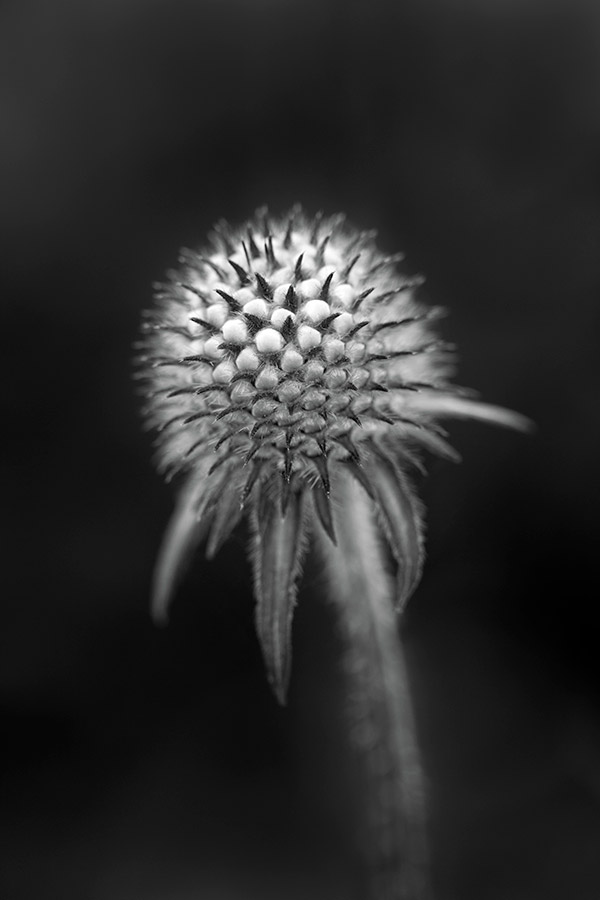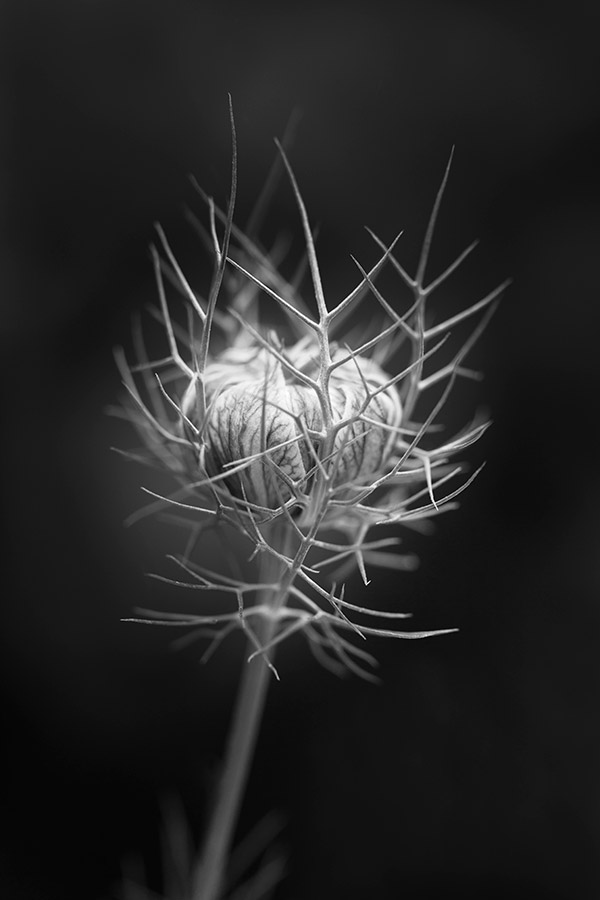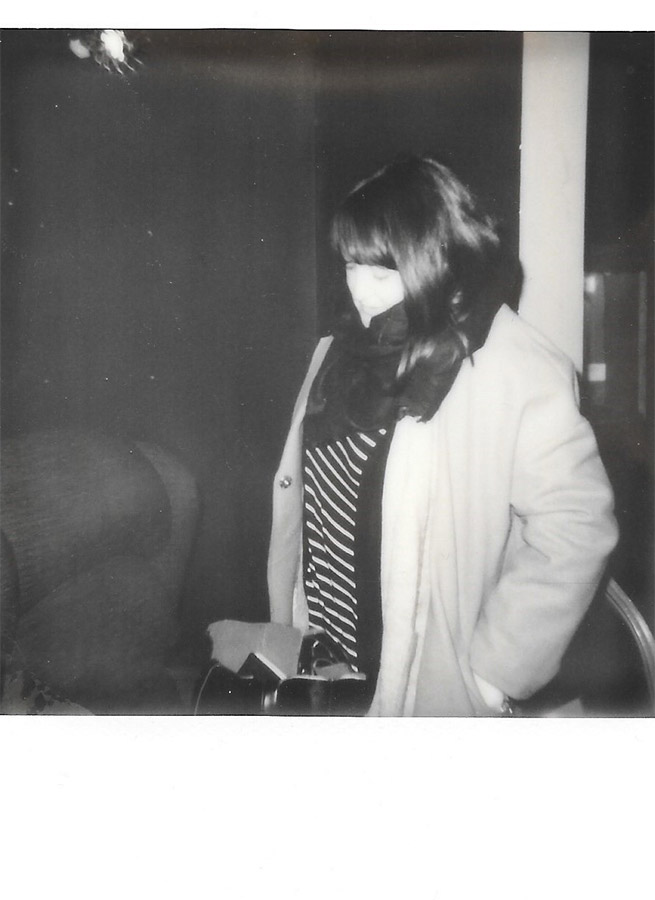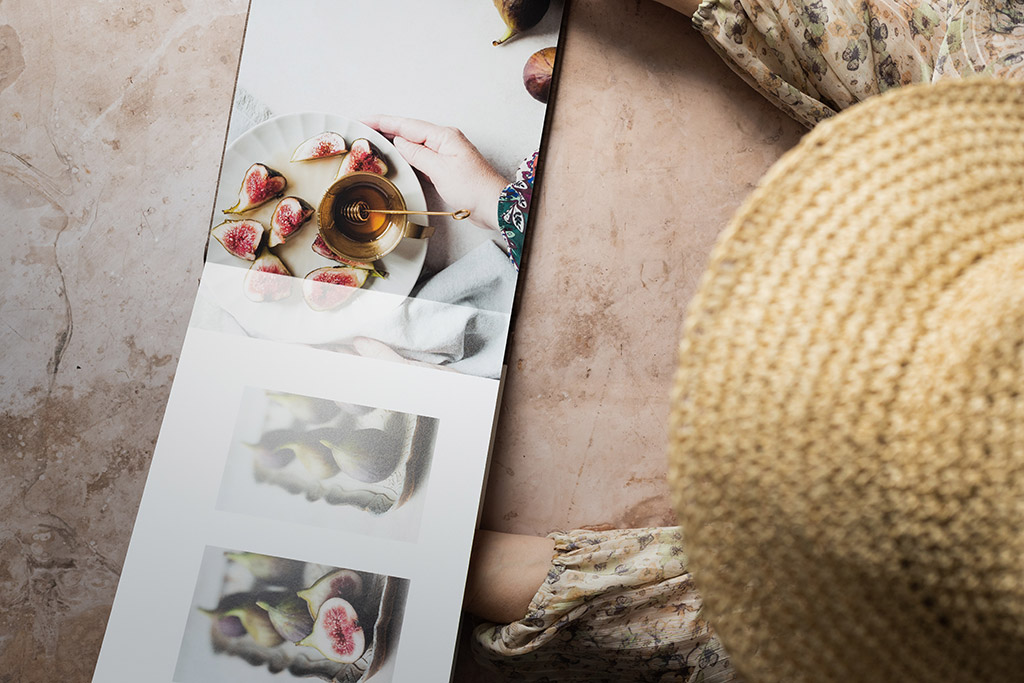Jessica Miller speaks with a selection of photographers, curators, judges, and portfolio reviewers for their input and tips on how to create a photography portfolio.
What is a photography portfolio?
Simply put, a photography portfolio is a curated set of photographs. It can be presented for exhibition, submitted to competitions, help build business or be just a personal selection of the best images you have made. It is likely you will build multiple portfolios in your photographic career.
Regardless of the type of portfolio you are creating, the one thing that all portfolios require is some editing. Understanding how to not only create, but select and edit, could make the difference in being shortlisted or winning in a competition, or to landing a professional commission.
How many photos should I include in my portfolio?
Different competitions and exhibition open calls will have their own recommended number of images to include in a portfolio. The EISA Maestro Photography Contest requires five to eight images and Travel Photographer of the Year, four. But the rule of thumb is to select around 6-10. Your work itself will also influence how many images are needed; you may decide to include more or fewer.
Below, I speak with a range of professionals from the industry to help you create a winning portfolio. Read on for great tips to get you started…
7 steps to creating a photography portfolio
Determine the type of portfolio
Consider who your audience is and what you are making your portfolio for.
Create a longlist
Start with a longer shortlist of your best photos before editing down to the final number. Only select images that serve a purpose in the theme or narrative you are telling.
Aesthetics and style
The colour palette, mood, light and style of your images should be consistent throughout your portfolio. At AP we recommend choosing either colour or black & white photos, rather than using both.
Organise photos and build a narrative
Arrange and order your portfolio so you have a beginning, middle and end. However, avoid being repetitive or including images that are too similar.
Presentation
Portfolio presentation can be through digital means or through printed mediums. If you specialise in multiple genres or want to share multiple projects, divide them into smaller sections and treat them as their own folio within your larger body of work.
Give context
Whether or not you need to provide it, it helps to write a short statement (about 150 words) about your portfolio. This will also help if you come to talk about your work.
Get feedback
Sharing your work with others and getting feedback will allow you to see how others react to the images together.
Annaïck Guitteny, Garden and Flower Photographer
(Editorial) ag-photography.co.uk, (Personal) flore-eau.co.uk
Instagram: @aguittenyphoto

Originally from France, Annaïck Guitteny moved to the UK 25 years ago to start a degree in Photography. She is now a professional photographer who specialises in plant and garden photography and works for magazines and garden designers. Annaïck won a Silver-Gilt Medal at this year’s RHS Botanical Art & Photography show for Opening Up, which was captured using a 100mm Macro lens.
‘Using a short depth of field allowed the background to remain out of focus without distracting from the main subject. I have converted these images to black & white in post-processing. I believe this helps to highlight the contrast between the various attributes of these plants.’
Annaïck’s tips for creating a successful portfolio and entering the RHS Botanical Art & Photography show:
- My first tip for entering this competition is to present a cohesive body of work. The theme of this competition can be broad (gardens, gardeners, wildlife in gardens and plants). But you should ensure you present a cohesive body of work throughout the six selected images.
- Make test prints. I printed out small test prints of all the images I was considering for this portfolio. Then I laid them out together to work out which six images worked (in my mind) best together, whilst showing a varied set of pictures. I had some other images that I really like on their own, such as a fern unfurling, but I felt it was too different from the rest of the set to include it.
- If focusing on plants, each image must be labelled with the correct plant name. The RHS has a guide on its website for people interested in entering, and it contains plenty of useful information.
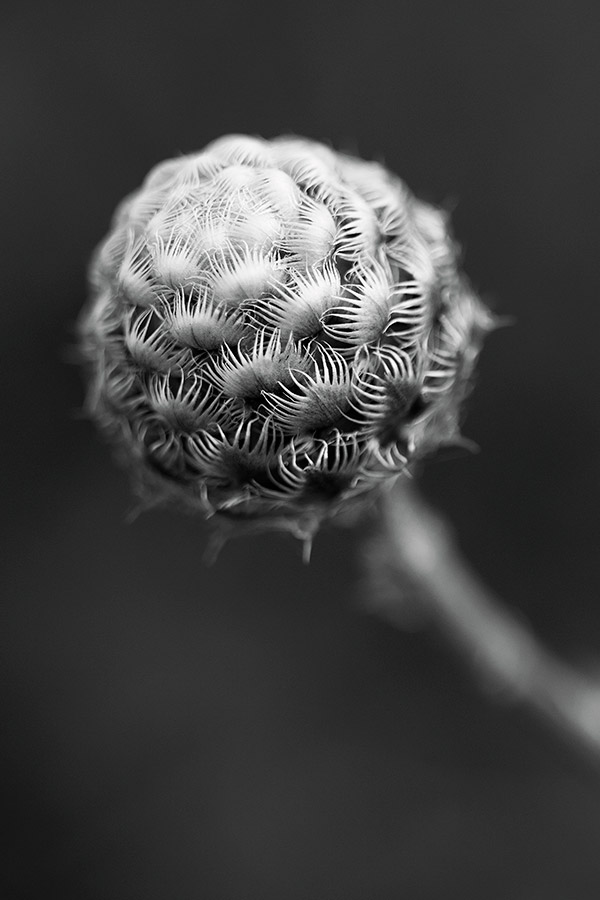
Centaurea ‘Totnes Fat Lemon’. Photo: Annaïck Guitteny
Matjaz Krivic, Travel Photographer of the Year 2022 Winner
krivic.com
Instagram: @krivicmatjaz
Facebook: www.facebook.com/matjaz.krivic
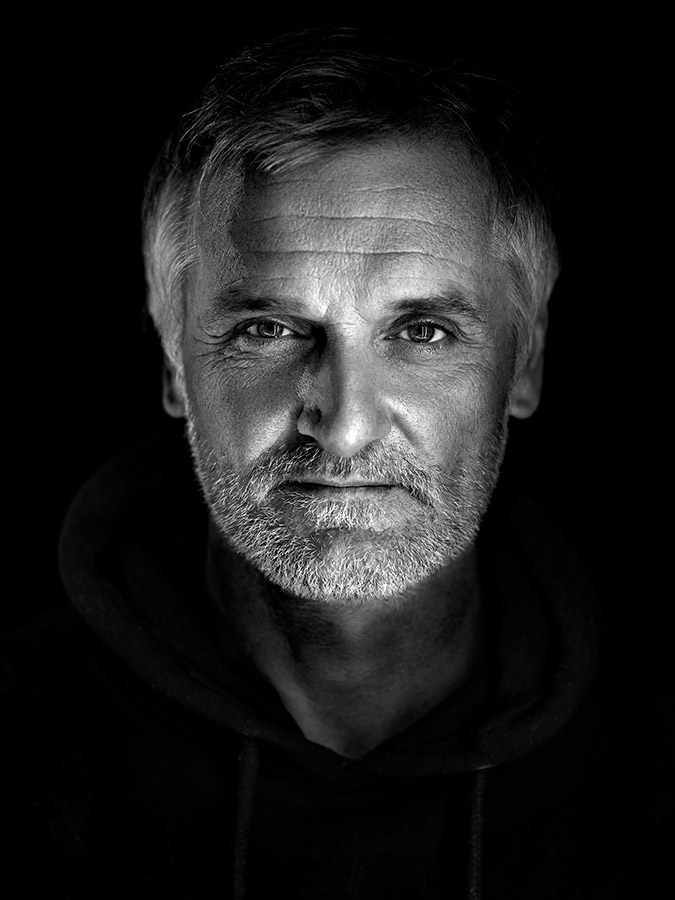
Matjaz Krivic has been a documentary photographer for 25 years. In recent years he has focused on conservation issues and acting as an advocate for a greener future through his work. His work and multimedia projects have been exhibited in galleries and museums, including at international photo festivals like La Gacilly Photo and Les Rencontres, and widely published by National Geographic, BBC, The Guardian, GQ, Wall Street Journal and Forbes.
His awards include World Press Photo, Picture of the Year International, and Lens Culture. He also co-created and was creative director of Bolivian photo festival FotoFestival Manzana 1. Matjaz won Travel Photographer of the Year 2022 with a portfolio of four images from his ongoing project The Last Two, which intimately presents the 33-year-old Najin – one of the world’s last two remaining northern white rhinos – and her keeper, Zachary Mutai, in Ol Pejeta Conservancy, Kenya.
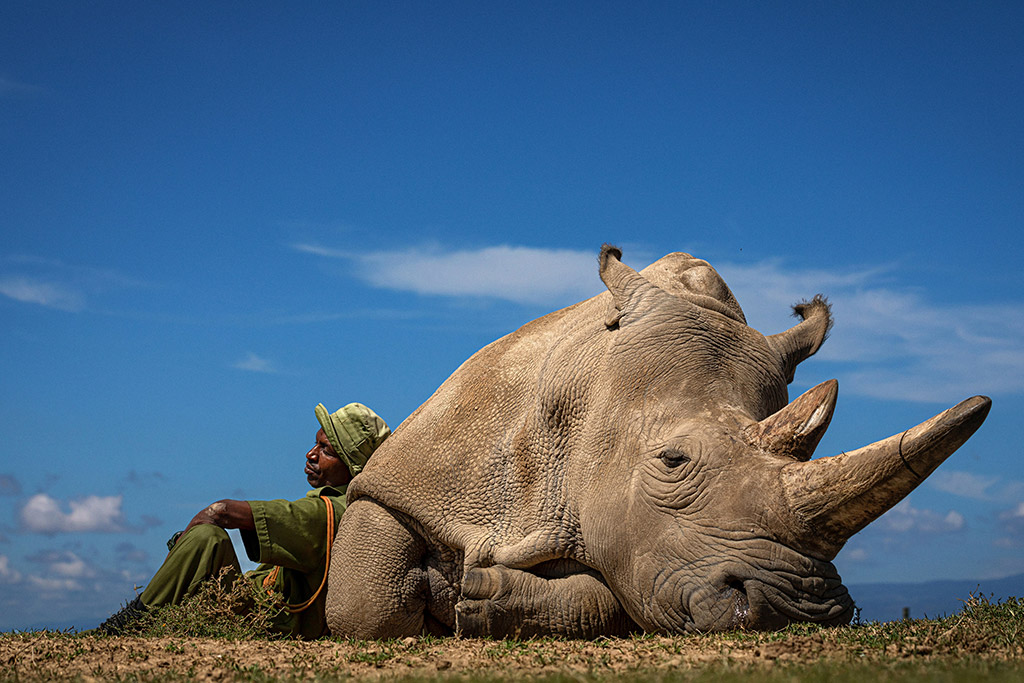
Photo: Matjaz Krivic, Travel Photographer of the Year 2022 winner.
How did you go about making your portfolio and entering it into Travel Photographer of the Year?
‘I was guided by the narrative – climate change has many implications and consequences and I think it’s important that we talk about it. Following the stories that either show the devastation or the solutions to the problem has been my main focus in recent years. Selecting images for a portfolio is a process of maintaining the consistent style – tell a story and choose the ones that speak the loudest.
What is the most important thing to consider when creating a photography portfolio?
‘Sometimes we are personally attached to some photos since they can carry memories from that moment that photo was taken. I think this is the biggest mistake most of us are making – subjectively selecting the images. It helps seeking feedback from peers, mentors or industry professionals. Constructive criticism can help a lot.
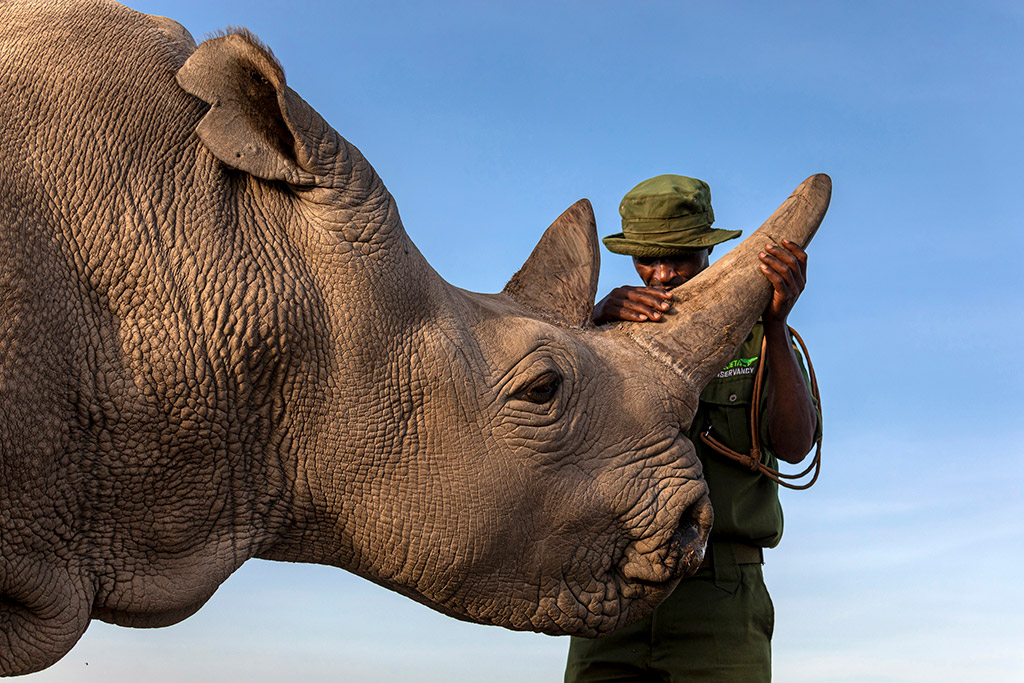
Photo: Matjaz Krivic, Travel Photographer of the Year 2022 winner.
Chris Coe, Founder of Travel Photographer of the Year
‘It’s easy to throw images together and call it a portfolio’, says Chris Coe. ‘It’s much harder to create one which is consistent in quality, coherent and tells a story. This is the key to a successful portfolio, whether it’s for a competition or simply a body of a photographer’s work.
In competitions, like TPOTY, portfolio categories are generally themed so it’s important to choose images which fit the theme of that category. However, many strong portfolios often have an additional element which ties them together. This could be content to tell a story within that theme, as Matjaz Krivic has done; it can be in the way the photographer has shot or stylised the images; or it can be more abstract, such as use of colour.
It is not hard to see why Matjaz’s portfolio stood out. It is a sensitively shot story showing the interaction between human and animal; it has real tenderness and care at the heart of it. You feel as if you are there with them. It’s also shot in beautiful light and from engaging angles which all show the connection between man
and beast.’
Entries for the 2023 Travel Photographer of the Year competition will be closing on 1 October 2023. Visit www.tpoty.com to submit your photos.
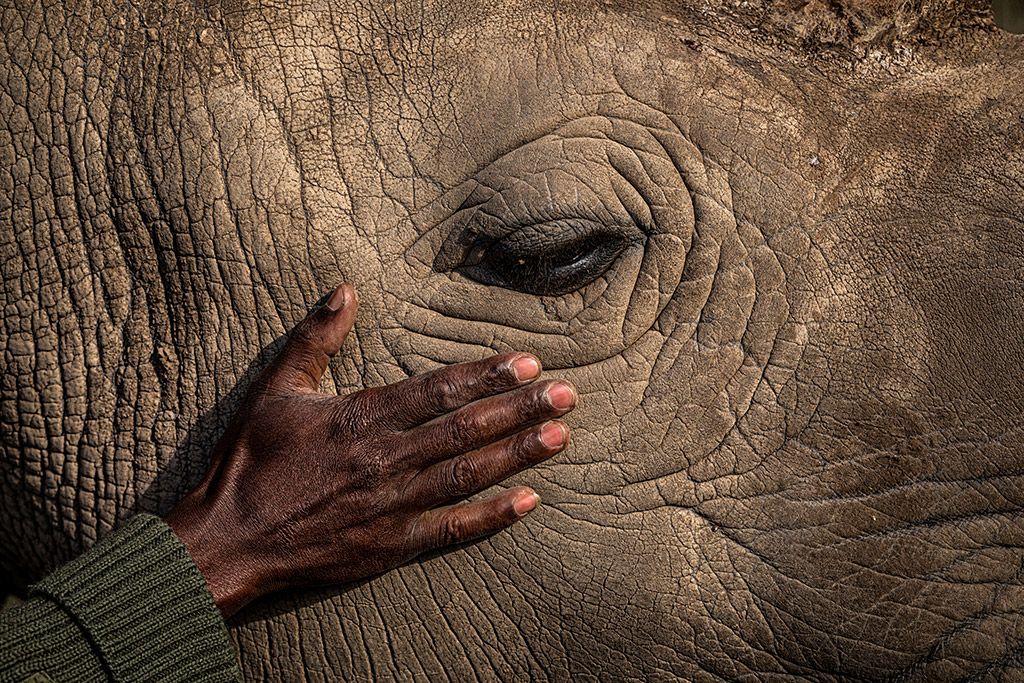
Photo: Matjaz Krivic, Travel Photographer of the Year 2022 winner.
Chris’s top tips for creating a portfolio
For a photographer’s portfolio of their work there are two golden rules –consistent standard of images and less is more
Consistency is key:
‘As a photographer showing their portfolio, they need to put themselves in the position of the person viewing it. If I look at a body of work and it has some really strong images, but also some which are weaker, I start to question how good the photographer is, how good is their editing and whether they can produce a consistent shoot if commissioned. This is where less is more comes in.’
Less is more:
‘There is a tendency to present lots of images. Don’t! A good picture editor doesn’t need to see hundreds or even tens of images so present just a small, tight section, say ten or 12 of consistent quality. This is true on websites as well so divide your images into galleries of six to ten images. You don’t need to show more.’
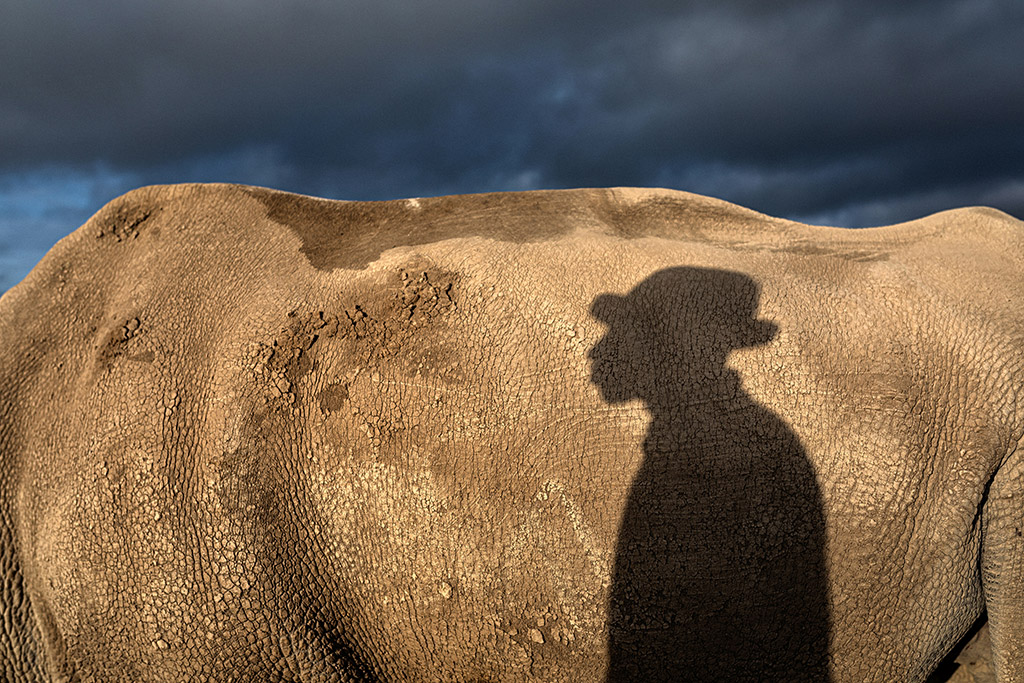
Photo: Matjaz Krivic, Travel Photographer of the Year 2022 winner.
Get feedback:
‘If you’re putting together a portfolio then take your time, pre-edit and ask someone else’s opinion. If you’re selecting, say, four images for a competition entry, then doing a pre-edit, a selection of about ten, will help you to then choose the four which fit together best. Once you’ve done this ask someone’s opinion, but don’t just ask then ignore. Listen to what they say and why. The reason is that they are more detached from your images than you are, so are not skewed by memories of the shoot and experiences around it. These you see, but a stranger looking at them doesn’t.’
See more guidance for entering Travel Photographer of the Year from Chris.
Nicola Shipley, Co-founder and Director of GRAIN Projects
grainphotographyhub.co.uk
Instagram: @grain_projects @Nicola_shipley
Twitter: @grainphotohub and @NicolaShipley1
Nicola Shipley is a curator, producer, mentor and consultant specialising in contemporary photography. She trained as an art historian, has an MA in History of Art, and a background in the visual arts. In 2021 Nicola was a judge for ‘Portrait of Britain’ and the Taylor Wessing Photography Portrait Prize in 2019. She is a board member of Photofusion.
GRAIN Projects is a platform for contemporary photography and a hub and network for practitioners. Part of the national photography network GRAIN collaborates with photographers, communities and organisations nationally and internationally. Recent projects have included working with FORMAT International Photograph Festival, Diffusion Festival, Coventry – UK City of Culture, Birmingham 2022 Festival – the Commonwealth Games, Birmingham Museum & Art Gallery, MAC, Centrala, Photoworks, Historic England, Forestry England and British Council and Tasweerghar.
What is the most important thing to consider when creating a photography portfolio?
‘Think about who is viewing your portfolio, what they might be looking for and what you are trying to achieve. For example, are you attending a portfolio review, a meeting with a curator, an editor, or a university interview? Is it online or in person? Your purpose should feed into your planning. Also, I think you should provide 12-15 pictures per project and two or three bodies of work. Don’t overwhelm the viewer but represent your practice clearly.’
How should you select images for a portfolio?
‘Print out images and lay them across a table so you can move them around, add and discard until you find the most focused edit. Ask family and friends to see if the ideas and themes you are exploring emerge for them, and attend reviews. Try not to hold onto one image for its own sake; create a concise narrative that you can expand where necessary.’
What makes a successful portfolio?
‘This is subjective but I am interested in strong ideas, visual narratives, and uniqueness. I have viewed hundreds of portfolios and those that have impact and are memorable are always those where the photographs have something new to say.’
Do you have any advice for how to present it?
‘Lots of artists and photographers find it difficult to talk about their work. I’d advise people to think about what you are trying to convey and to keep practising. Think about the five Ws: who, what, when, where and why? Don’t forget to talk about the title of your series, the ideas behind it and your approach. Consider leaving the reviewer, interviewer or curator with a postcard or a business card which includes your website, social media and contact details.’
Photographers for inspiration
‘I’m lucky enough to have seen hundreds of portfolios and have worked with inspiring photographers including Anthony Luvera, Arpita Shah, Clare Hewitt, Edgar Martins, Jonny Briggs, Julian Germain, Lydia Goldblatt, Mark Neville and Maryam Wahid.’
Biggest tip for photographers creating a portfolio
‘Think about your ideas and what you want to convey, be authentic, research for opportunities, take your time, practise and invest.’
Clare Grafik, Head of Exhibitions, The Photographers’ Gallery
thephotographersgallery.org.uk
Social media: @tpgallery
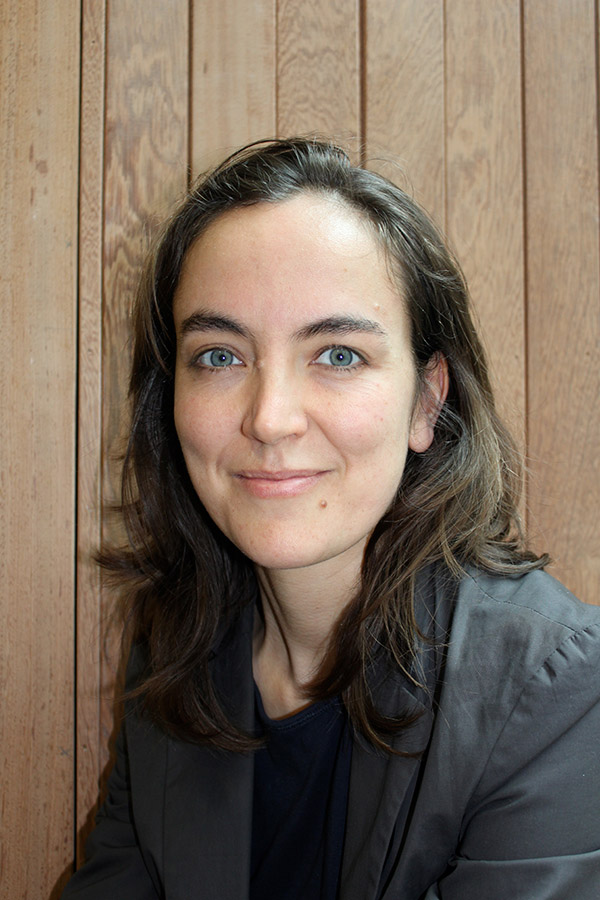
Clare Grafik has worked on shows with photographers including Lise Sarfati, Taryn Simon and Cuny Janssen. She most recently curated the exhibition ‘Pictures from the Garden’ for Photo Oxford and a retrospective show on Evelyn Hofer at The Photographers’ Gallery (runs until 24 September 2023).
How would you recommend selecting images for a portfolio?
‘If your work falls into different or distinct projects/genres make sure each subject or area feels coherent. Don’t include one-off photographs that don’t relate to any other images in your folio as this detracts from the overall message. Asking someone else how they would edit the folio can be a useful exercise.’

Folio Friday at The Photographers’ Gallery. Photo: Eric Aydin Barberini Courtesy The Photographers’ Gallery
What do you look for in a photography portfolio and what makes a successful one?
‘As a curator in a public gallery space, I am happy to see projects that are either fully formed or more ‘in-progress’. A successful folio for me doesn’t have to be smartly presented or have a lot of money spent on it, but it will have a breadth of work either from one project, or more, that gives me a clear sense of the photographer’s vision: where they are coming from and where they might be going with their practice.’
Do you have any advice for how to present it?
‘Many folios now happen online as well as in person, so often the first experience that I have with someone’s work is through a website or series of digital files. Don’t try to present too much in one session, as most reviews have set time limits. It is helpful to ask folio review organisers a few questions: how long is the review; how big are the tables (so that you don’t bring along prints that are too big to lay flat); and think about whether you want to bring a laptop to show your work.’
Biggest tip for photographers creating a portfolio
‘Play to your strengths with the editing, as you often only have a short window to present the work. If your folio really represents your practice, you’ll have better conversations about it and get better advice.’
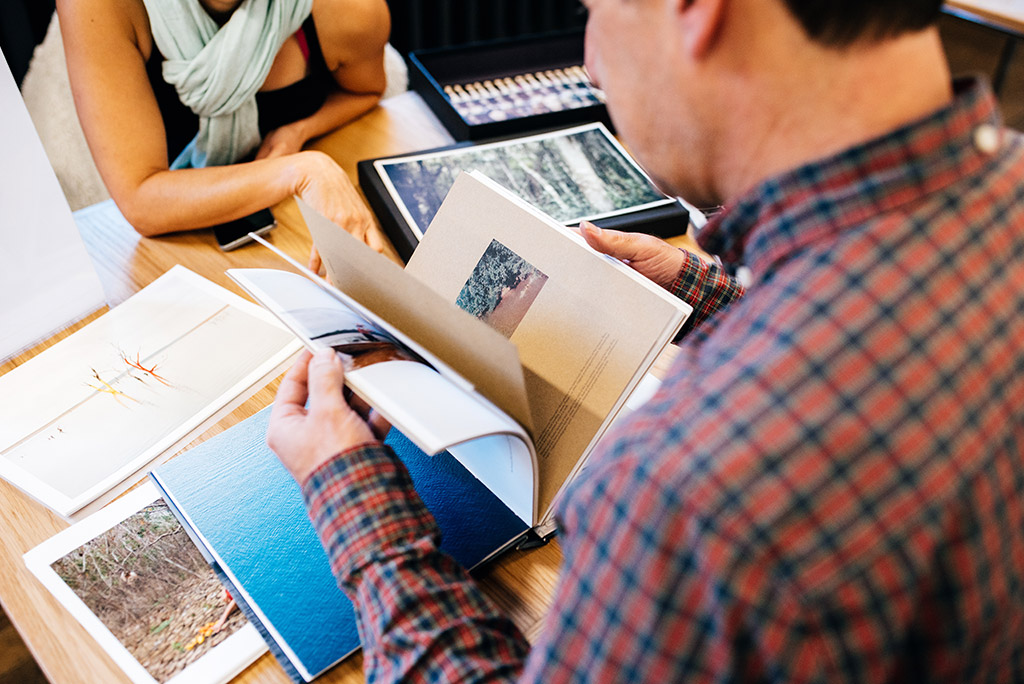
Folio Friday at The Photographers’ Gallery. Photo: Eric Aydin Barberini Courtesy The Photographers’ Gallery
Niamh Treacy, Curator & Coordinator, FORMAT International Photography Festival
formatfestival.com
Social media: @formatfestival
Niamh Treacy is the Curator and Coordinator for FORMAT International Photography Festival, the UK’s leading international contemporary festival of photography and related media based in Derby, UK. She has reviewed internationally for organisations such as Belfast Photography Festival, Uganda Press Photo, Hamburg Triennial and LCC and has juried open calls for FORMAT, UPPA, Zealous and the United Rugby Championship.
Niamh is part of the FORMAT and QUAD curatorial team curating shows both internationally and nationally such as; Radical Souls, FORMAT23, un/natural, Lishui Photography Festival (2021), Feature Shoot Emerging Photography Awards, QUAD (2021), #massisolationFORMAT, Derby Museum and Art Gallery (2021); FUTURE FOCUS, QUAD Gallery (20222) and Bruce Asbestos, Eye of Newt 2.0, QUAD (2022).
What makes a successful portfolio?
‘There are a variety of different uses and needs for a portfolio and it’s ok – much like a CV – to have different versions that are used for different instances. For example, if you’re creating a portfolio to send out to photo editors or publishers you will want to include information such as a CV, website links, and a wider variety of work which shows off the scope in your skills and practice.
However, if preparing a portfolio for a review, you want to be more concise in what you are showing. Depending on who you are being reviewed by you may want to focus your portfolio on specific projects or series of works or it may be one project that you need advice on editing for a publication.
It is unlikely a curator or gallery owner will want to see your commercial studio product shots so alter your projects accordingly.
When reviewing or looking at portfolios for the yearly FORMAT Portfolio Review I am presented with various different portfolio formats. For me, the success of your portfolio relies on the selection of images being presented and the way in which they are formatted for viewing. Since the COVID lockdowns the format of the portfolio review has changed drastically with many review events, including ours, going online.
One of the biggest things for us as organisers when making the decision to take the event online was how it would affect the viewing of the artists portfolio. Although the tactile aspect (amongst other things) is lost, we have seen huge success in these events. However, it is important for artists to consider this change in viewing.’
Do you have any advice for how to present it?
‘For both in-person and online types of events, the reviewer will want to be able to see your images as clearly as possible so try to ensure images are able to be seen singularly rather than grouped on a page. If you are wanting to show curation ideas include these separately. Its also always nice to see exhibition install shots if you have them and these can be included at the end.
Ensure you are clearly defining each individual project with a title page and text. Keep texts brief – you can always include a link to more information. Another important point would be not to include too many images. Especially in a portfolio review setting, your time is limited and you want to use it as efficiently as possible. Be selective and create an edit which shows an overview of the project. You can then include a link to more images.’
What is the most important thing to consider when creating a portfolio?
‘Again, as mentioned above this is really dependant on the purpose of the portfolio. Talking specifically about a portfolio review setting you want to ensure your portfolio is formatted for the type of event you are attending. If you are taking part in an online review, present your images in a folder or a PDF with one page per image so they can be viewed clearly and enlarged with ease. If you are attending an in person review, where ever possible I would suggest not bringing precious prints. Your prints will be handled a lot and it makes it easier for the reviewer if they can be handled freely.
It’s also important to remember than in a review event time is often short so be prepared and use it wisely. Ensuring your portfolio is represented clearly and concisely ensures time isn’t wasted trying to work out the sequence of images.
Be clear about what you want from the review – be prepared with questions that are specific to the person you are presenting to.’
Are there any photographers you would recommend looking at for inspiration?
‘Portfolios are something often shared internally, however the way artists present their work online via websites and social media is also really important. Some artists I recommend looking at are Tami Aftab (@tamiaftab), Alex Ingram (@Alexingramphoto), Felicity Hammond (@Flisshammond), Monica Alcazar-Duarte (@monicaalcazarduarte) and Noémie Goudal (@noemiegoudal)’
Your biggest top tip for photographers when creating a portfolio
Be specific to the person or organisation you are sending your portfolio to or being reviewed by.’
Andy Moore LRPS, Distinctions Manager at the Royal Photographic Society
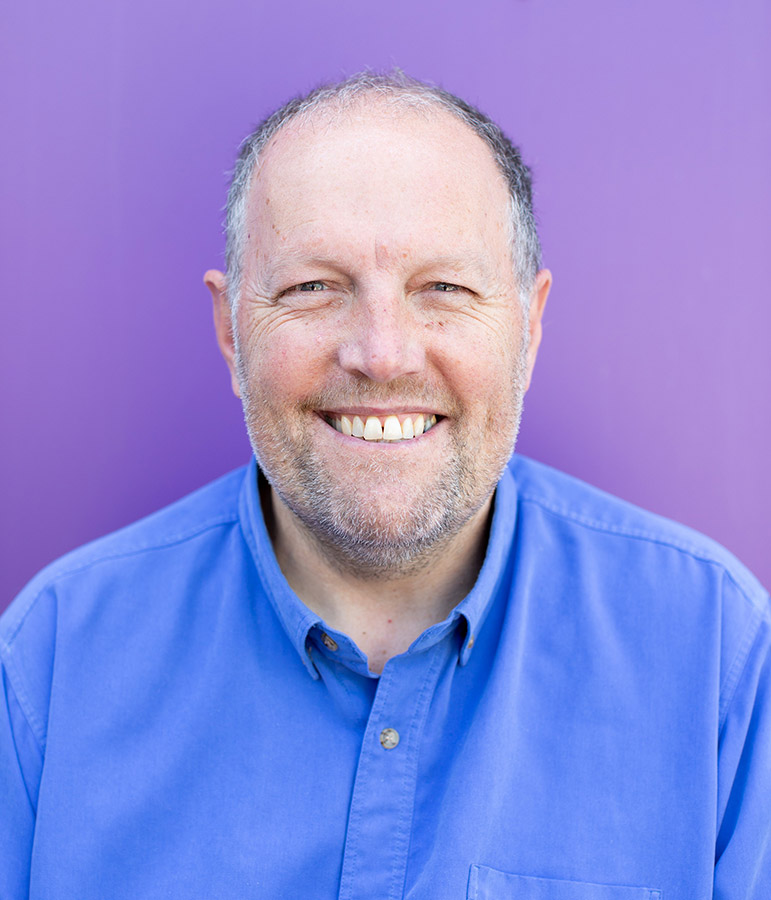
The Licentiate of the Royal Photography Society
The Licentiate Distinction (LRPS) was established at the Royal Photographic Society in 1972 to challenge photographers and provide projects to help to further their skills. ‘Letters after their name (LRPS) is a draw for some people, but overwhelmingly most people sign up for the chance to challenge themselves as a photographer and create a body of work that will help to focus their minds and further their creativity.’
What skills are needed to be successful?
‘It’s not about a fancy camera or the latest equipment; a genuine passion for photography as a medium and a willingness to learn is what makes an excellent photographer and successful Licentiate. Composition and visual awareness are central skills. Observe, pay attention to details and interesting juxtapositions. There is nothing more gratifying than capturing an image that others haven’t seen or would not photograph; it’s also a clear indication that you are discovering your own photographic voice.
‘Creativity is crucial, but technical proficiency such as understanding camera settings and post-processing techniques forms the foundation of excellent photography and will allow you to achieve high level results. Other essential skills are patience and perseverance; waiting for the right light, location or the decisive moment may take hours or even days. Embrace the process, take risks, and learn from successes and failures.’
Applying for a Licentiate
‘When it comes to sending in your submission, be proud of your work. Set your standards high and be ruthless in editing images. Also, remember that applying for a Licentiate is one step in a journey. As we have seen with the headlines about AI, the world of photography is ever evolving, and to become excellent, you must commit to lifelong learning. By continuously experimenting and pushing your creative boundaries, you will develop a unique style that sets you apart as an excellent photographer.
I look forward to welcoming you on your journey. Best of luck!’
See photography portfolio inspiration here:
Macro insect portfolio wins EISA Maestro UK competition!
How to create a successful macro portfolio
15 ways to add wow to your wedding portfolio
Have a portfolio you want to share with us? Submit yours to our Reader Portfolio open call for a chance to be featured in the magazine. More details here.
Follow AP on Facebook, Twitter, Instagram, YouTube and TikTok.




